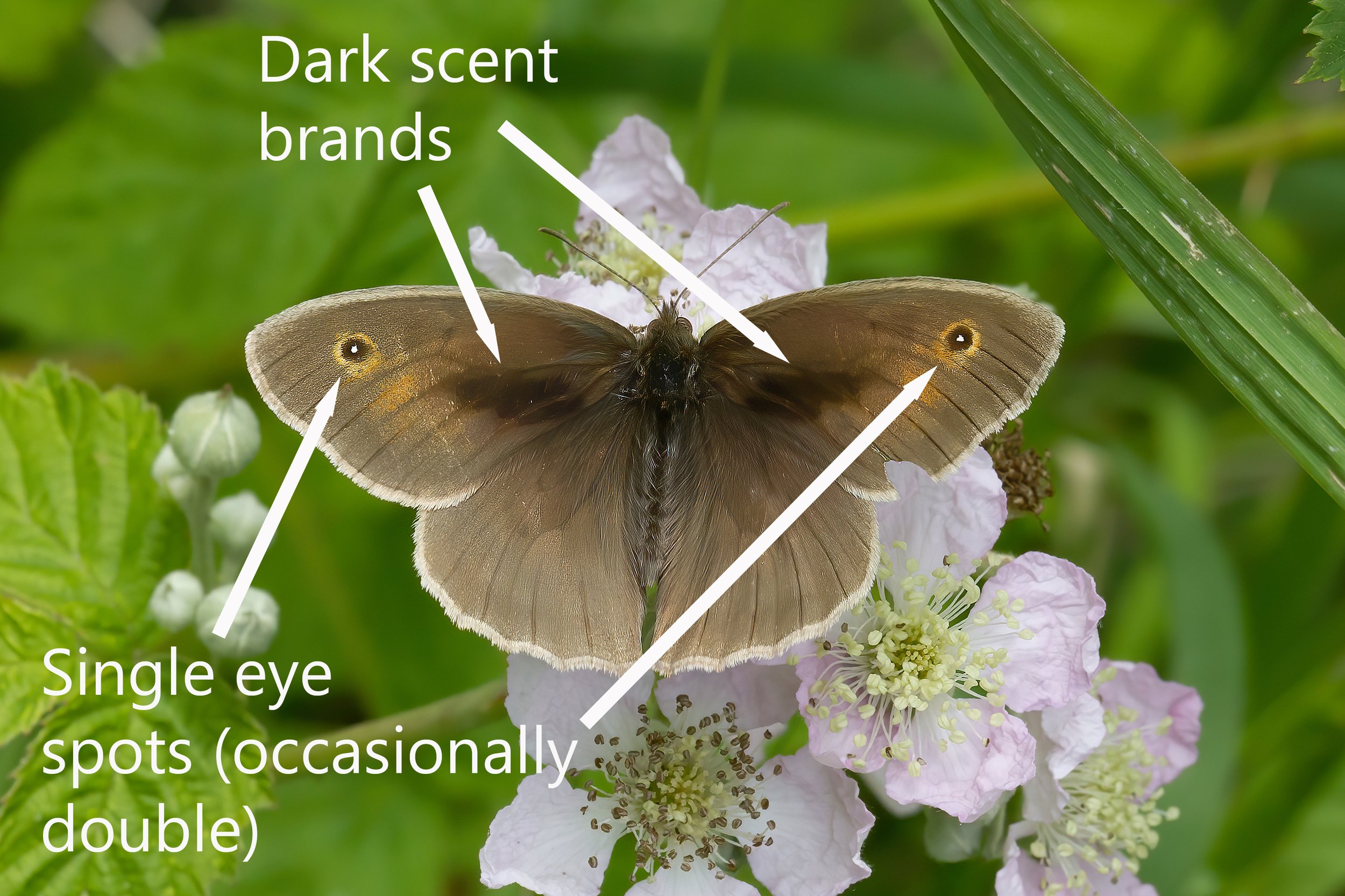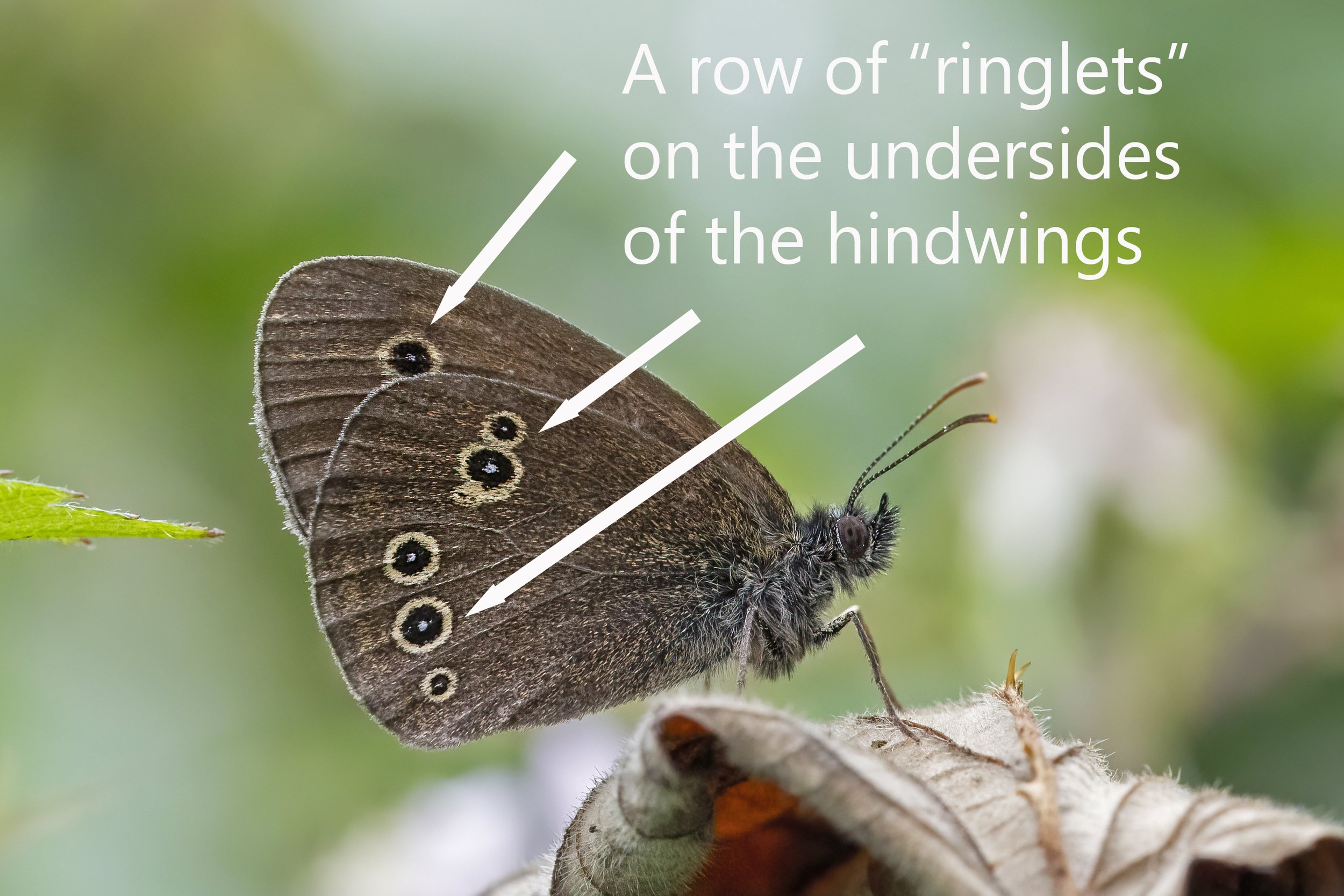Identifying Confusion Species - The Browns
The identification of the Browns can be quite challenging in the field, particularly for those who are new to butterfly recording. However, by learning a few of the key differences they can, with a good view, be quite easily told apart. Fortunately, for those who are recording butterflies in the summer months, there will be a lot of butterflies to practice your identification techniques on as the Browns can be extremely common butterflies often flying in profusion. In this guide, we will concentrate on the Meadow Brown, Gatekeeper, Ringlet and Small Heath. As always with butterfly identification a pair of close-focusing binoculars would be an advantage, as would the use of photography as the images can be studied at home.
One of the commonest of the Browns is the Meadow Brown, so it makes sense to start with this one, especially as it is the one most likely to be confused with another species (the Gatekeeper). The Meadow Brown is a medium sized butterfly with a brown base colour. The underwings can be rather plain with a jagged line separating lighter and darker patches on the hindwings and a large single eye spot on the forewings. Please note that occasionally the Meadow Brown can have a double eye spot so don’t purely use this feature for conclusive identification.
Meadow Brown
Although the undersides of the hindwings of the Meadow Brown are normally plain they can occasionally have a row of black dots
Meadow Brown
The upperwings of the male Meadow Brown have a brown base colour and a single eye spot (as before please note that occasionally a double eye spot can be seen) and small patches of orange scales. Faint darker scent brands can also be seen on the forewings.
Meadow Brown, male
The female Meadow Brown can often have quite a striking upperwing with a brown base colour, single eye spots (which can occasionally be a double) and much more orange on the forewings.
Meadow Brown, female
One of the commonest misidentifications in the Browns concerns separating the Meadow Brown and the similar-looking Gatekeeper. However, there are some obvious distinguishing features to look out for. In the Meadow Brown, the eye spot is normally a single and only very occasionally a double, whereas in the Gatekeeper it is always a double. There is a row of white spots running down the undersides of the hindwings too.
Gatekeeper
Occasionally when at rest, or mating, the eye spots cannot be seen. However, the row of white spots is always evident on the undersides of the hindwings.
Gatekeepers
The upperwings of the Gatekeeper show a lot more orange than the Meadow Brown. The male has the double eye spots and large orange patches with dark scent brands running through them.
Gatekeeper, male
As the female Gatekeeper lacks the dark scent brands of the male, her orange patches on the upper forewings have only the double eye spot within them.
Gatekeeper, female
The Ringlet is significantly easier to tell apart than the Meadow Brown and Gatekeeper. The Ringlet has a dark brown base colour and the undersides of the wings have a row of dark spots surrounded by pale borders. It is these “ringlets” that give this butterfly its name.
Ringlet
The upperwings can be a bit trickier to tell apart from the male Meadow Brown. However, the Ringlet has no orange at all on the forewings, unlike the male Meadow Brown. The Ringlet has a dark brown base colour and a pale fringe to the upperwings. There are often dots, or “ringlets”, showing on the upperwings but these can be somewhat variable in their appearance. Quite often the “ringlets” are barely noticeable as in the photo below.
Ringlet
However, in some butterflies the “ringlets” on the upperwings can be very noticeable such as in this example in the below photo.
Ringlet
The final Brown we will discuss here is the Small Heath. The easiest identification feature to use here is the size as it is significantly smaller than the Meadow Brown, Gatekeeper and Ringlet. This butterfly always rests with its wings closed and it is most often encountered when disturbed from its grassland habitat, where it will fly a short distance before landing again. There is a single eye spot on the forewing and the underside of the hindwing has a pale patch on a jagged line which only reaches halfway down. The Small Heath can also sometimes have a row of white dots running down the hindwing as seen in the bottom photo.
Small Heath
Small Heath













